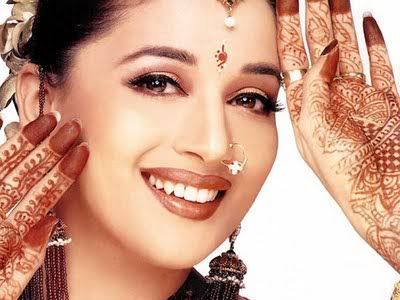Bindi (decoration)
A bindi (Hindi: बिंदी, Bindi, from Sanskrit: बिनदु, bindu, drop point ) is a middle of the forehead between the eyebrows point of painted or glued jewelry at this point where the energetic third eye is suspected.
First, this traditional red dot is the sign of a married woman and should not only them, but also protect her husband.
Today, bindis are worn in India by unmarried as well as married women, even of small children. They are more popular than ever. While the Bindi indicated earlier, whether a woman is married or not, that is no longer exclusively the case.
The difference: For married Hindu women end point is mandatory in India, they never go without him. It does not matter whether it classic red and carry him around, or colored ornamental as stickers. Only when they become widows, they dispense with this jewelry. Unmarried can wear a bindi, is he pure decoration or a sign of blessing, a tika or tilak. Even Indian Muslims stick today often these trendy point on what would have been unthinkable just a few years ago.
Traditional points are plotted in red powder color, sindoor or kumkum. Today reusable stick-on bindi jewelry are the most widespread. These are available in all colors and in a variety of ornamental forms, for example, or golden studded with tiny faux pearls or stones.
Such jewelery Bindis come in the West in recent times more and more fashionable.
A special type is the most Bindi Wedding Bindi. This consists of a whole series of small bindi, which are glued along the eyebrows, and is worn by the bride during her wedding reception.
Religious origins
The original Bindi is the specifically feminine form of the tilak, the Hindu forehead mark as a religious time. The region between the eyebrows, on which the bindi is placed, is considered in the Hindu faith, the sixth chakra and seat of secret knowledge.










